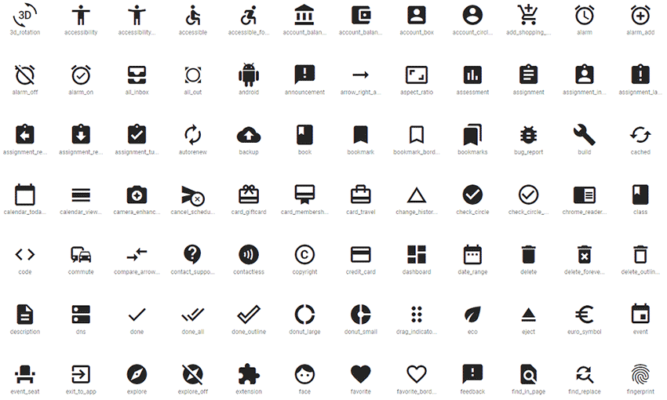In the expansive world of digital design and web development, Scalable Vector Graphics (SVG) stands as a versatile and powerful format. SVG isn’t just a file type; it’s a dynamic tool with a myriad of applications. This blog aims to unravel the versatility of SVG by exploring its various uses in different domains.
-
Understanding SVG Basics:
SVG, short for Scalable Vector Graphics, is an XML-based vector image format. Unlike raster images, SVG images are resolution-independent, allowing them to scale seamlessly without loss of quality. This fundamental characteristic lays the foundation for the diverse applications of SVG in various fields.
- Web Design and Development:
SVG is a fundamental building block in modern web design. It is used for creating scalable and responsive graphics on websites. From logos and icons to intricate illustrations, SVG allows designers to maintain visual quality across different screen sizes and resolutions.
- Icons and Logos:
SVG’s scalability makes it an ideal choice for designing icons and logos. In the era of responsive design, where websites cater to a range of devices, SVG ensures that icons and logos look sharp and clear on everything from mobile devices to high-resolution desktop monitors.

- Interactive Graphics
SVG’s XML structure makes it easy to manipulate using CSS and JavaScript. This enables the creation of interactive graphics and animations directly within the browser. From hover effects to dynamic illustrations, SVG adds a layer of interactivity to web pages.
- Data Visualization:
SVG plays a crucial role in data visualization. Charts, graphs, and maps created with SVG can be easily scaled and customized. This makes it a preferred format for displaying complex information in an accessible and visually appealing manner.
- Print Media:
SVG is not confined to the digital realm; it seamlessly transitions into print media. Its vector nature ensures that graphics can be scaled for various print sizes without losing quality. Designers use SVG for creating high-quality illustrations, brochures, and other printed materials.
- User Interfaces (UI):
In UI design, where precision and adaptability are paramount, SVG shines. It allows designers to create scalable interface elements, ensuring that the user experience remains consistent across devices with different screen sizes and resolutions.
- Animation
SVG’s compatibility with CSS animations and JavaScript libraries like GreenSock Animation Platform (GSAP) makes it a favored format for creating vector-based animations. Whether for website banners or interactive storytelling, SVG provides a canvas for dynamic visuals.

- Mobile Applications:
SVG is widely used in mobile app development. Its lightweight nature contributes to faster load times, a crucial factor for mobile user experiences. Icons, illustrations, and other graphics can be seamlessly integrated into mobile applications.
- Cricut and Vinyl Cutting:
Hobbyists and crafters benefit from SVG in platforms like Cricut or Silhouette for vinyl cutting. The vector paths in SVG files provide precision for cutting intricate designs, allowing enthusiasts to create custom decals, stickers, and more.
- Educational Resources:
SVG’s clarity and scalability make it an excellent choice for educational materials. Teachers and content creators use SVG to design clear and adaptable illustrations for digital textbooks, presentations, and online learning platforms.
Scalable Vector Graphics (SVG) stands at the intersection of creativity and functionality. Its versatility spans across web design, print media, data visualization, animation, and more. As a designer, developer, or enthusiast, understanding the diverse applications of SVG opens the door to a world where graphics can be seamlessly integrated and adapted across a spectrum of digital and physical mediums. SVG’s journey continues to evolve, shaping the visual landscape of the digital era.
And recently, you probably already know what are SVG files. If you’re curious about other aspects of SVG files, check it out here.

